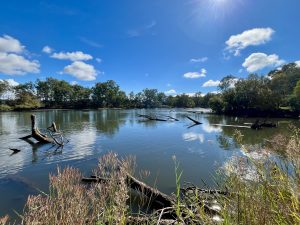We all know how frustrating it can be when we have pests invading our homes, gardens, and properties. One pest in particular is rather irksome – and that’s mice! It’s understandable to want to be rid of them, and there are all sorts of ways to do this…. BUT before you go gung-ho with eradication plans, please make sure you have an introduced pest and not one of our native marsupials! One group of critters that can easily be mistaken for mice and/or rats is the antechinus, which is a small, carnivorous animal in the same subfamily as phascogales.
There are currently 15 described species of antechinus in Australia, with four of those being discovered since 2012. The larger superfamily to which they belong include animals such as the Tasmanian devil which is the largest member, quolls, the extinct thylacine, and the Pilbara ningaui which is the smallest of the group at around 5 cm in length.
Antechinuses are mainly found on the east coast of Australia along the Great Dividing Range however there are species in the Top End of the NT, Tasmania, and the south west corner of WA. The yellow-footed antechinus inhabits inland areas across south-eastern QLD, NSW and into northern and south-western Victoria. Within their range, antechinuses live in different types of environments, from savannah woodland and rainforests, to tussock grassland, heathland, and sedgeland. Some species forage in trees while others are completely ground-dwelling. The diet of antechinuses also varies with species and habitat, but mainly includes insects as well as other small prey such as spiders, millipedes, and centipedes up to larger prey like skinks and small mammals.
There are two antechinus species that occur in the Albury-Wodonga area: the yellow-footed antechinus (Antechinus flavipes) and the agile antechinus (A. agilis), which has a smaller range, mainly along the southern half of Victoria into south-eastern NSW. These amusing critters can run upside-down along tree branches and can sometimes be found in gardens and houses in suburban areas. Sightings of yellow-footed antechinus have been recorded from both sides of the Border, near Baranduda, Leneva, Table Top, and McFarlanes Hill. Like most other antechinuses, they breed only once a year in a synchronised mating event in either late winter or spring which is triggered by a particular rate of increase in day-length after the winter solstice. After mating for up to 12 hours, males become ill and die, leaving females and their offspring without competition for resources.
Yellow-footed antechinuses in particular can be found pilfering from kitchens and making nests inside your home and it’s easy to jump to conclusions upon seeing something small and furry scampering across your floors. So how do you tell if your uninvited guest is an antechinus or a mouse? Firstly, antechinuses are generally larger than mice, with a body length of up to 165 mm for yellow-footed antechinuses and 124 mm for the agile antechinus. They have short, dense fur that can be greyish or brown with orange and a paler underbelly. Their tails are thin and almost the same length as their body. Most antechinuses have pointed snouts that give them a shrew-like appearance, eyes with pale rings around them, and double-lobed ears. Yellow-footed antechinus are distinguishable by the change in fur colour from grey on the head to orange-brown on its sides, rump, and feet, and it has a black tip on its tail. Mice have rounder heads and smaller ears.
If there is any doubt, trapping is preferred over poison, as our native marsupials will eat things such as rat/mouse poison. Once trapped, you can get a closer look at the back feet – antechinuses have no nail on the ‘thumb’ of their hind feet while introduced rodents have claws on all digits. If both native and non-native species are present, there is no safe way to exclusively target one and not the other. Even if you are certain you only have pests, the use of poison can be risky and needs to be handled with great care. Make sure you do your research and use first generation poisons – this type is less likely to cause any harm to an animal that eats prey that’s been poisoned, for example, owls can be at risk if they eat a poisoned mouse.
As we encroach more and more on the habitat of native animals to build our homes, we displace them from theirs. It’s up to all of us to educate ourselves on how best to co-exist with our precious wildlife. Perhaps you can plant some native species in your garden to provide food and habitat, or maybe even construct some nest boxes to encourage native animals to nest somewhere besides your house.






